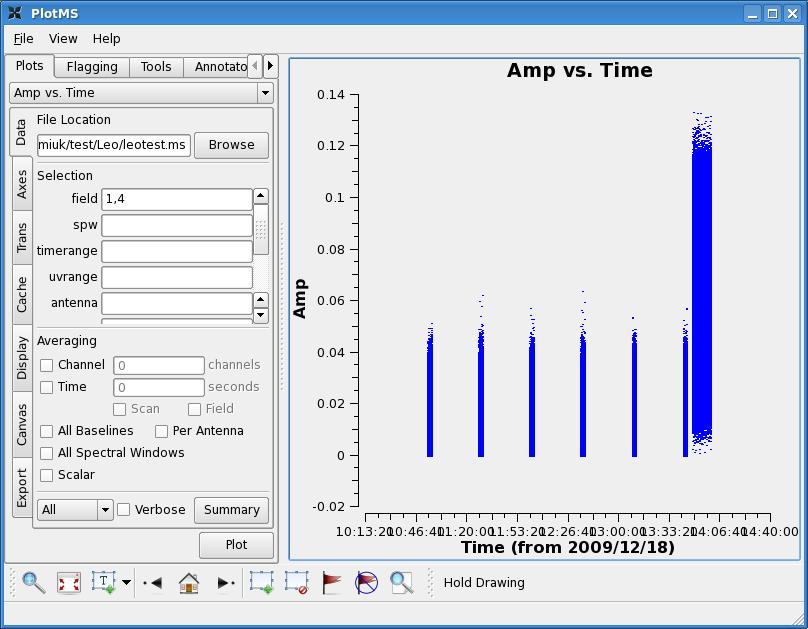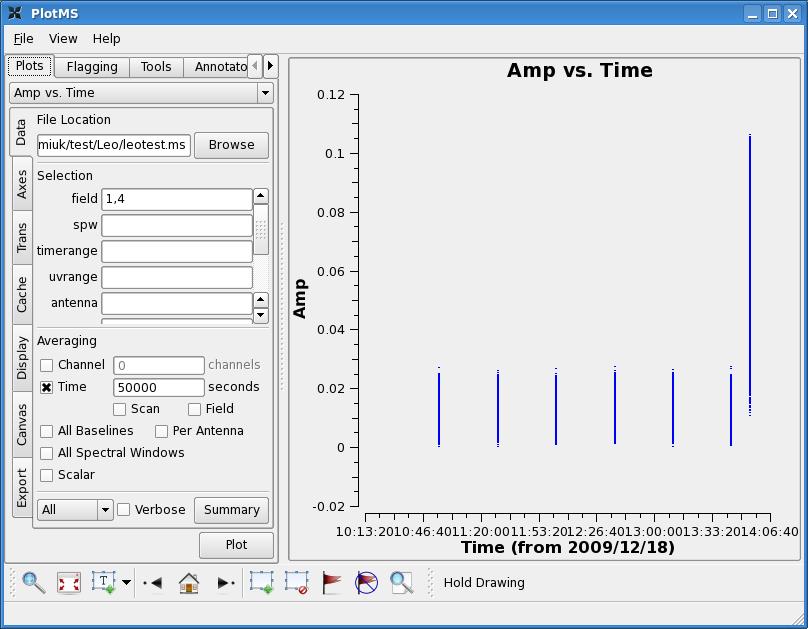Averaging data in plotms: Difference between revisions
No edit summary |
No edit summary |
||
| Line 19: | Line 19: | ||
| | | | ||
<div style="float: left; width: 50%; align: left;"> | |||
Try setting the blank box to a very long time---let's say 50000 seconds---much longer than your total time observing. If we plot amplitude vs. time, you'll notice that not all of the data has been averaged together in time; in fact, only data within individual scans has been averaged together. | |||
</div> | |||
<div style="float: right; width: 50%; text-align: center;"> | |||
[[File:plotms_timeave1.jpg | 300px]] | |||
''Click to enlarge'' | |||
</div> | |||
|- | |||
| | |||
If we click on the '''Scan''' checkbox and replot the data, we now see that the scans for the individual calibrators have been averaged together. | If we click on the '''Scan''' checkbox and replot the data, we now see that the scans for the individual calibrators have been averaged together. | ||
Finally, if for some reason, we'd like to average the two sources together in time, we click to make a checkmark in the '''Fields''' box. Now we get a plot like the one to the right; all data from both calibrators has been averaged to a single point in time. | Finally, if for some reason, we'd like to average the two sources together in time, we click to make a checkmark in the '''Fields''' box. Now we get a plot like the one to the right; all data from both calibrators has been averaged to a single point in time. | ||
Revision as of 01:24, 19 February 2010
You can average your measurement set on the fly with plotms. The averaging options can be found under the Data tab, and are mostly intuitive.
|
However, time averaging can be a little confusing, as it is controlled by three fields. If you click the checkbox next to Time under Averaging, a blank box with units of 'seconds' should become active, along with two checkboxes: Scan and Field. To the right, we've plotted two calibrator sources from a multi-source measurement set. There has been no averaging. One is a phase calibrator observed in six scans, while the other is a brighter flux calibrator observed in one scan at the end of the observations. |
|
Try setting the blank box to a very long time---let's say 50000 seconds---much longer than your total time observing. If we plot amplitude vs. time, you'll notice that not all of the data has been averaged together in time; in fact, only data within individual scans has been averaged together. |
|
If we click on the Scan checkbox and replot the data, we now see that the scans for the individual calibrators have been averaged together. Finally, if for some reason, we'd like to average the two sources together in time, we click to make a checkmark in the Fields box. Now we get a plot like the one to the right; all data from both calibrators has been averaged to a single point in time. |

